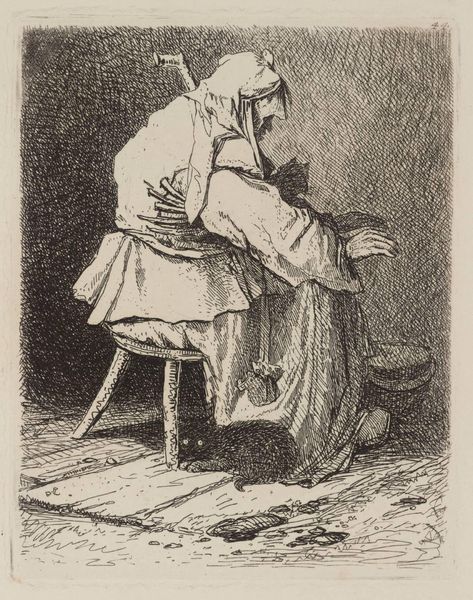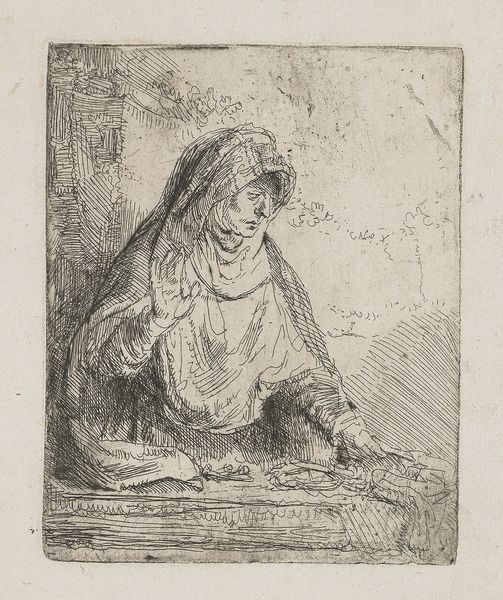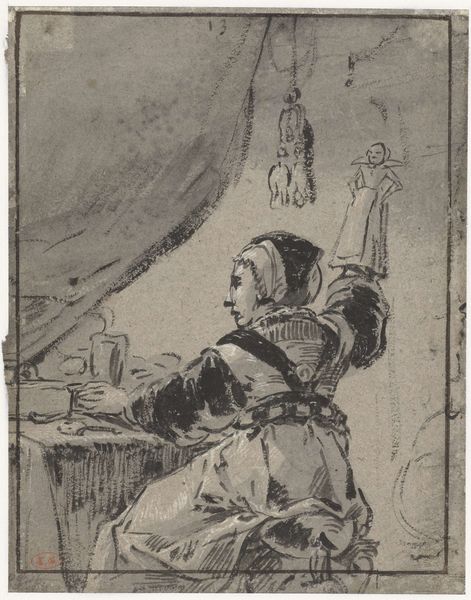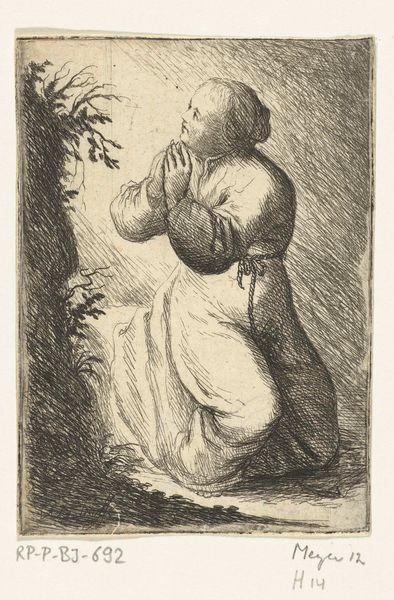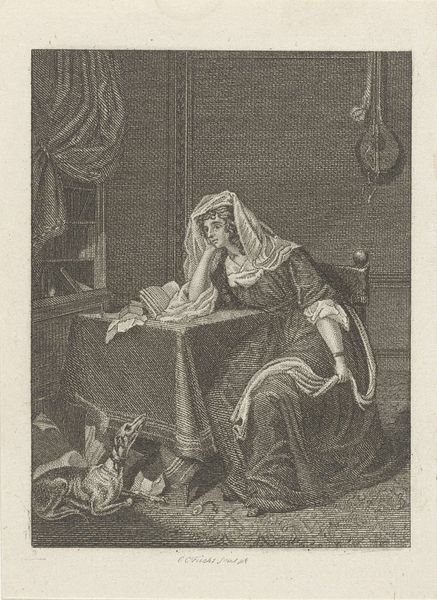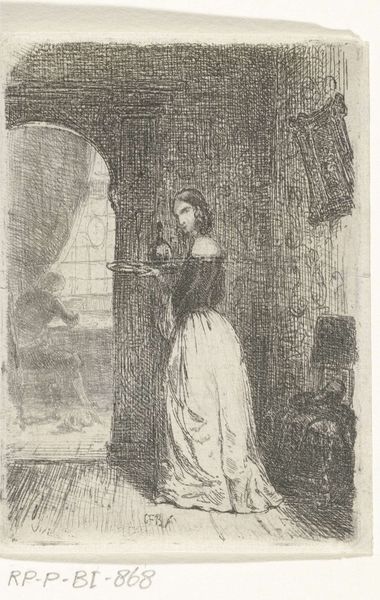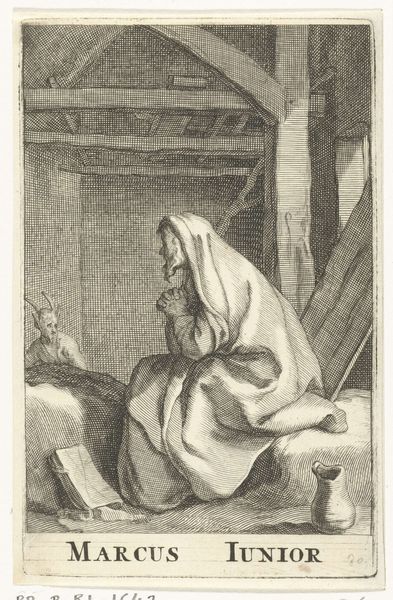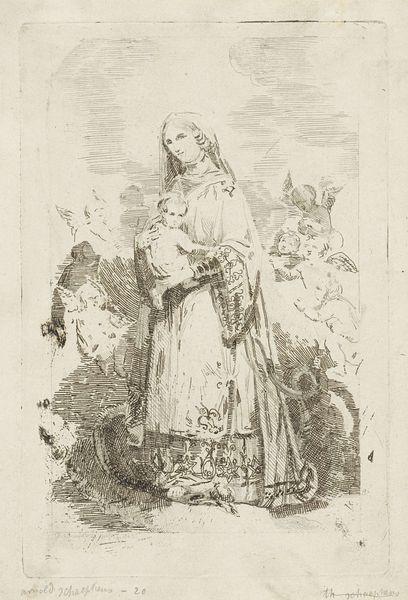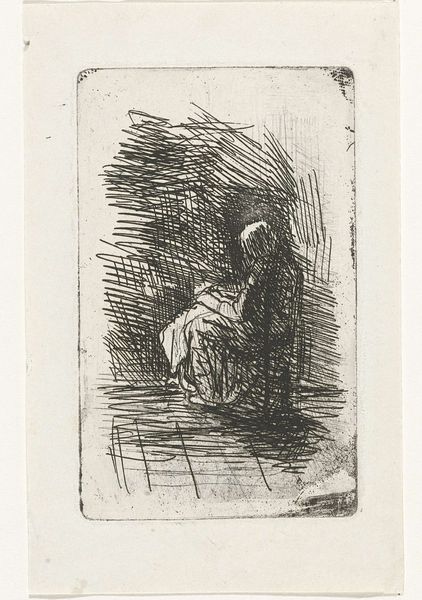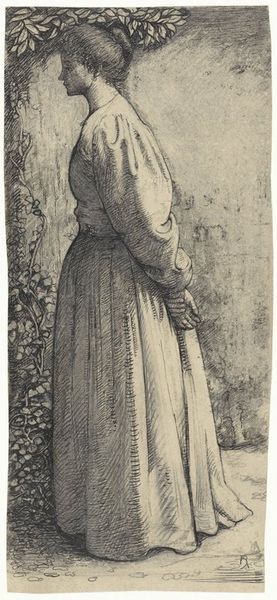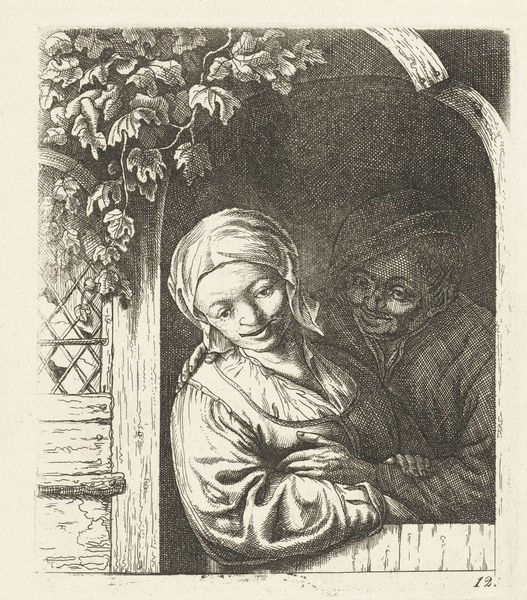
print, etching
#
narrative-art
#
baroque
# print
#
etching
#
figuration
#
vanitas
#
history-painting
#
miniature
Dimensions: height 224 mm, width 80 mm
Copyright: Rijks Museum: Open Domain
Curator: Here we see Giovanni Domenico Tiepolo's etching, "Heilige Margaretha van Cortona aanbidt crucifix," created between 1748 and 1752. What’s your immediate response to it? Editor: Stark. The high contrast and vertical composition amplify the saint's spiritual anguish. Her upturned gaze and clasped hands express a deep sense of piety. It's quite emotionally direct. Curator: It’s intended to be. Tiepolo situates the figure of Saint Margaret within a visual culture heavily influenced by the Counter-Reformation, designed to evoke empathy and religious fervor. Notice the skull near her feet. Editor: Yes, a potent vanitas symbol. The skull contrasts with her active devotion, reminding us of earthly mortality. But it's her body language, the tilt of her head, the drapery clinging to her form that suggests genuine, personal suffering. How does this fit with contemporary expectations of the time? Curator: During that period, especially within devotional prints like these, representations of saints served didactic functions. Tiepolo offers viewers a direct connection to Margaret’s experience. He frames her as a relatable figure undergoing profound transformation. Such portrayals of personal devotion are, in turn, linked to broader power dynamics— reinforcing the authority of the Church while offering individual paths to grace. Editor: The medium itself also enhances that impact. The fine, almost nervous lines of the etching give the scene a raw, immediate quality—unlike, say, the smooth polish one might expect from an oil painting intended for aristocratic patronage. The artistic intent here isn't the depiction of nobility, but something rawer. Curator: Precisely, Tiepolo understood the impact of prints, as accessible objects to create more intimate devotional experiences. Its wider circulation amplified these ideas. This reminds us that artworks don’t exist in a vacuum, they are participants in ongoing dialogues and cultural exchanges. Editor: And the artist's deft control over light and shadow makes this piece captivating. Notice how the light illuminates Saint Margaret while Jesus is set into the shadows—a striking artistic decision! Ultimately, it showcases a profound emotional response with just a few simple materials. Curator: I find your reading compelling; perhaps more importantly, it suggests this work succeeded as it both provided intimate devotional aid but also circulated social and religious teachings.
Comments
No comments
Be the first to comment and join the conversation on the ultimate creative platform.
